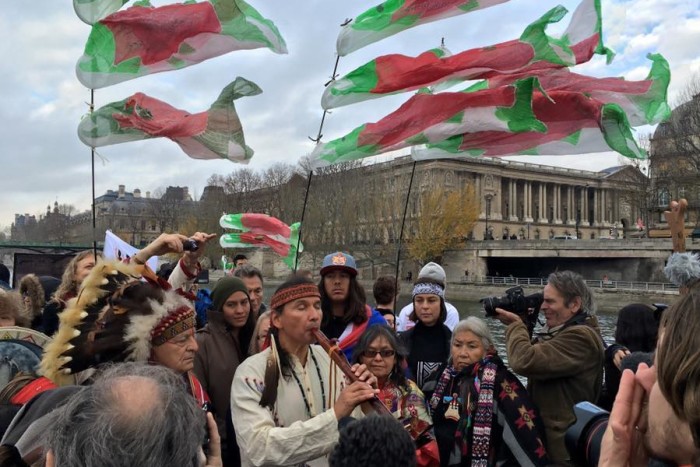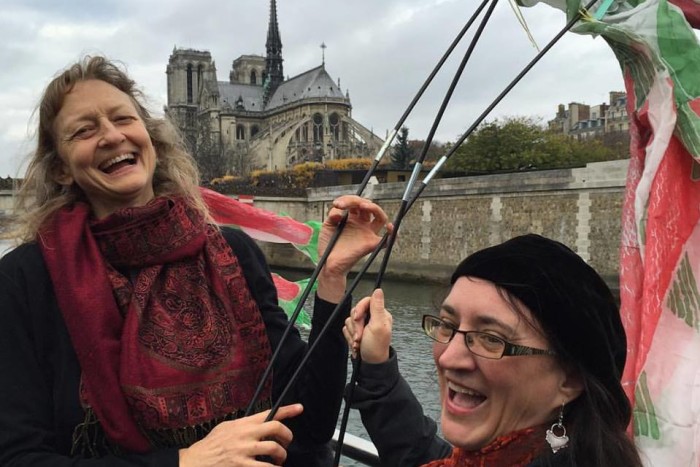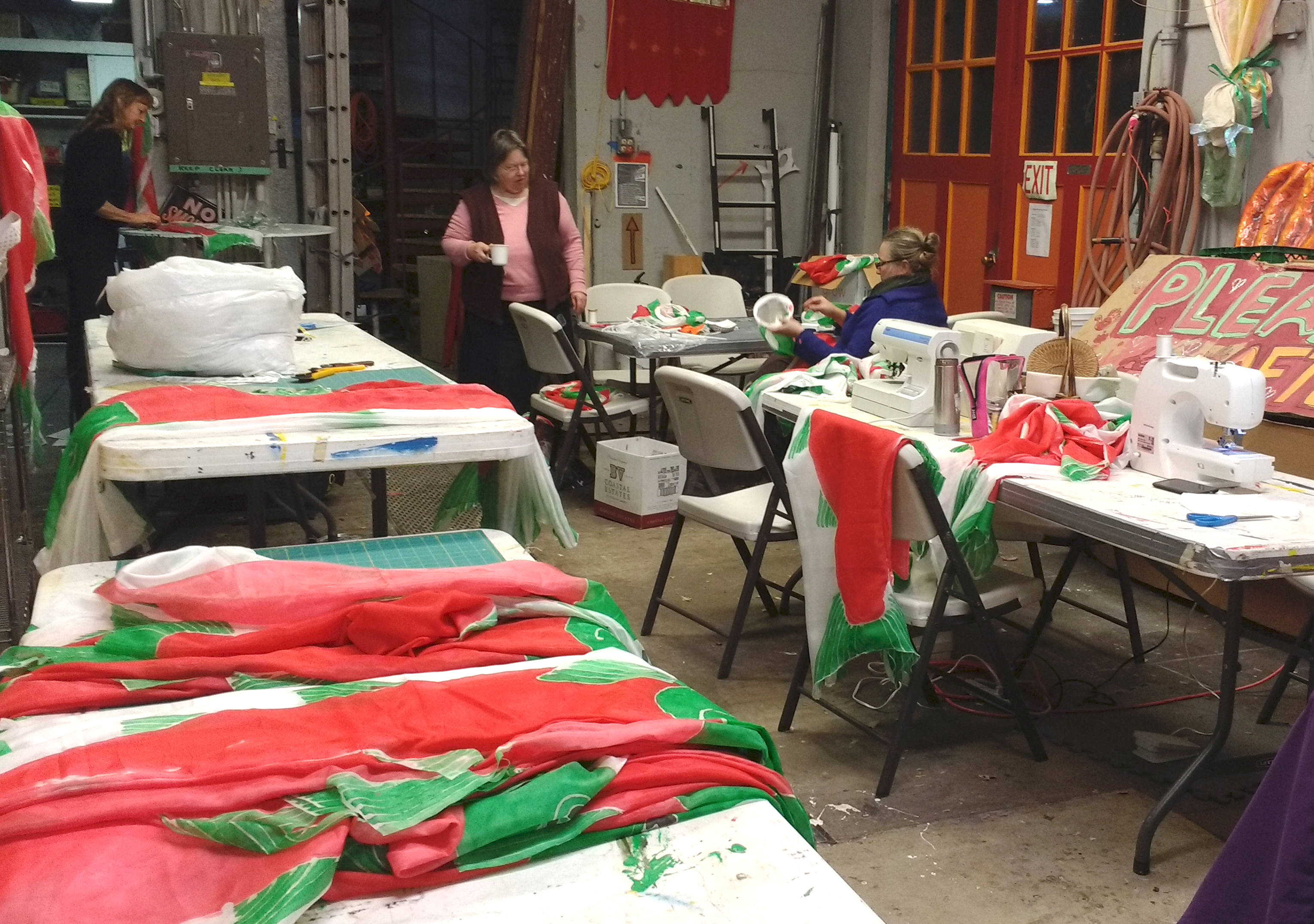
The first night they arrived in Paris, Lisa Marcus, Denise Henrikson and Paul Cheoketen Wagner of Salmon is Life wasted no time in taking to the streets with one of the 350 silk salmon lanterns they brought with them. While Wagner played his flute, the lantern illuminated the dark streets.
“People really smiled and lit up and and connected to the salmon,” Henrikson wrote in a blog post.
The group brought the silk salmon lanterns to Paris for the COP21 international climate negotiations. Delegates from 195 countries will decide on an international agreement to limit carbon emissions.
As the world is watches COP21, Henrikson wants them to see something beautiful. For her, beauty is the best way to inspire people to act.
“It’s almost like the more data people hear, the more it drives their heads into the sand, because it’s really quite overwhelming,” she said. “I think that there’s never been a more important time to be there with a message of beauty and love and connection and light… These things — they’re beautiful — they were designed to take your breath away.”
Henrikson estimates each salmon lantern took about 6 hours to make, from dyeing the silk through decorating with eyes and scales. Creating the 350 salmon took volunteers roughly 2,000 hours.
The number 350 was chosen for its significance to climate change — it’s also been adopted by the grassroots climate organization 350.org. The number comes from NASA scientists James Hansen, who determined that the maximum safe amount of carbon dioxide in the atmosphere is 350 parts per million (ppm). Current levels are close to 400 ppm.
Marcus said she’s seen an increase in the number of people wanting to get involved, even if they don’t consider themselves artists.
“It’s a really nice way for people to enter the movement,” she said. “There are various little stages along the way and this is one of them.”
Nancy Norman, a volunteer who worked on sewing the salmon lanterns, fits this profile.
“I’m not really a visual person person, I’m a word person, but I’ve come to have a lot of respect for the visuals at big climate gatherings,” she said. “They really help to tell the story, and people need stories to grasp onto.”
The salmon was chosen for many reasons. It’s an indicator species — one that’s so sensitive to its environment that when it’s threatened, marks a sure sign of an unhealthy ecosystem. It’s also a keystone species that enriches its habitat in an irreplaceable way. Humans and salmon are both threatened by climate change.
Salmon have a significance for France, Marcus noted. They once swam in the Seine river before becoming extinct between the two World Wars. They have made a small comeback in modern times. The word salmon even comes from medieval French.
Salmon is integral and sacred to indigenous peoples of the Northwest. In the Coast Salish Saanich tribe Wagner belongs to, salmon are known as the “hard-working people.”
To Wagner, salmon represent the human responsibility to take care of the environment.
“To me it’s all about the message of care — taking care, because our first peoples here have always understood the importance of where we fit in as people,” he said. “These leaders around the world that are making these decisions about how much CO2 and other greenhouse-causing emissions go into our atmosphere, they need to understand also the importance of our role as human beings.”

After the Paris attacks in mid-November, city authorities banned public demonstrations. But activists have found creative ways around this. On Dec. 6, Salmon is Life joined indigenous groups from around the world as they kayaked up the Seine river to Paris.
This action was a response to a change in the language around the rights of indigenous peoples in the legally binding Paris accords. The demonstrators were protesting the rights of indigenous peoples that were removed from the legally binding draft of the document.
However, the Salmon is Life team don’t see themselves as protesters.
“We’re not protesting anything — we’re saying we are all connected and we need to honor what is beautiful, and so what our offering is, is honoring salmon and honoring life through beauty,” said Marcus. “There’s no protest in that.”
Follow along with Salmon is Life in Paris on their blog.

Lisa Marcus, left, and volunteers work on creating silk salmon lanterns. (Photo by Chetanya Robinson.)
Editor’s note: an earlier version of this story misspelled Denise Henrikson’s name. This story has been corrected.

